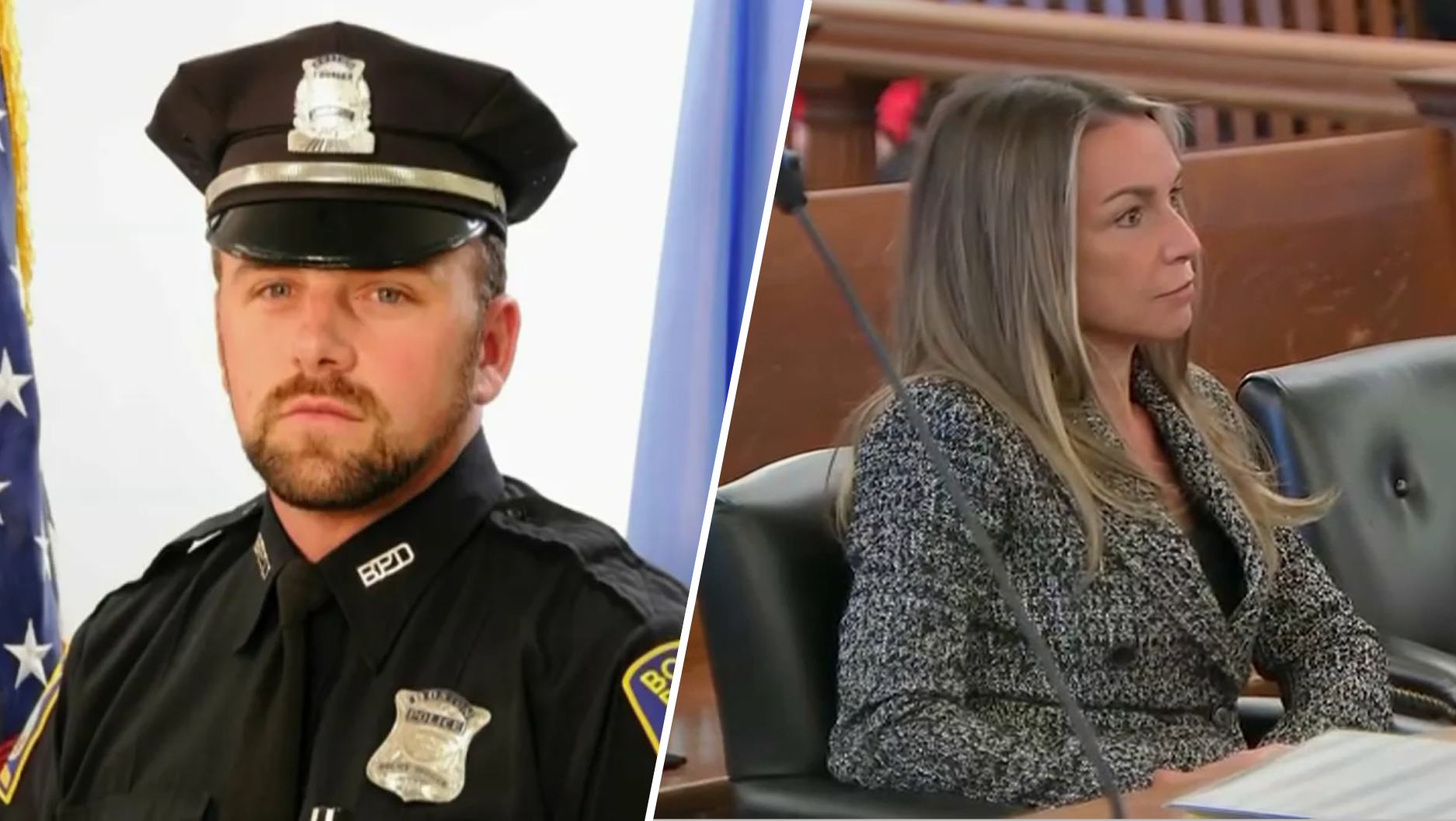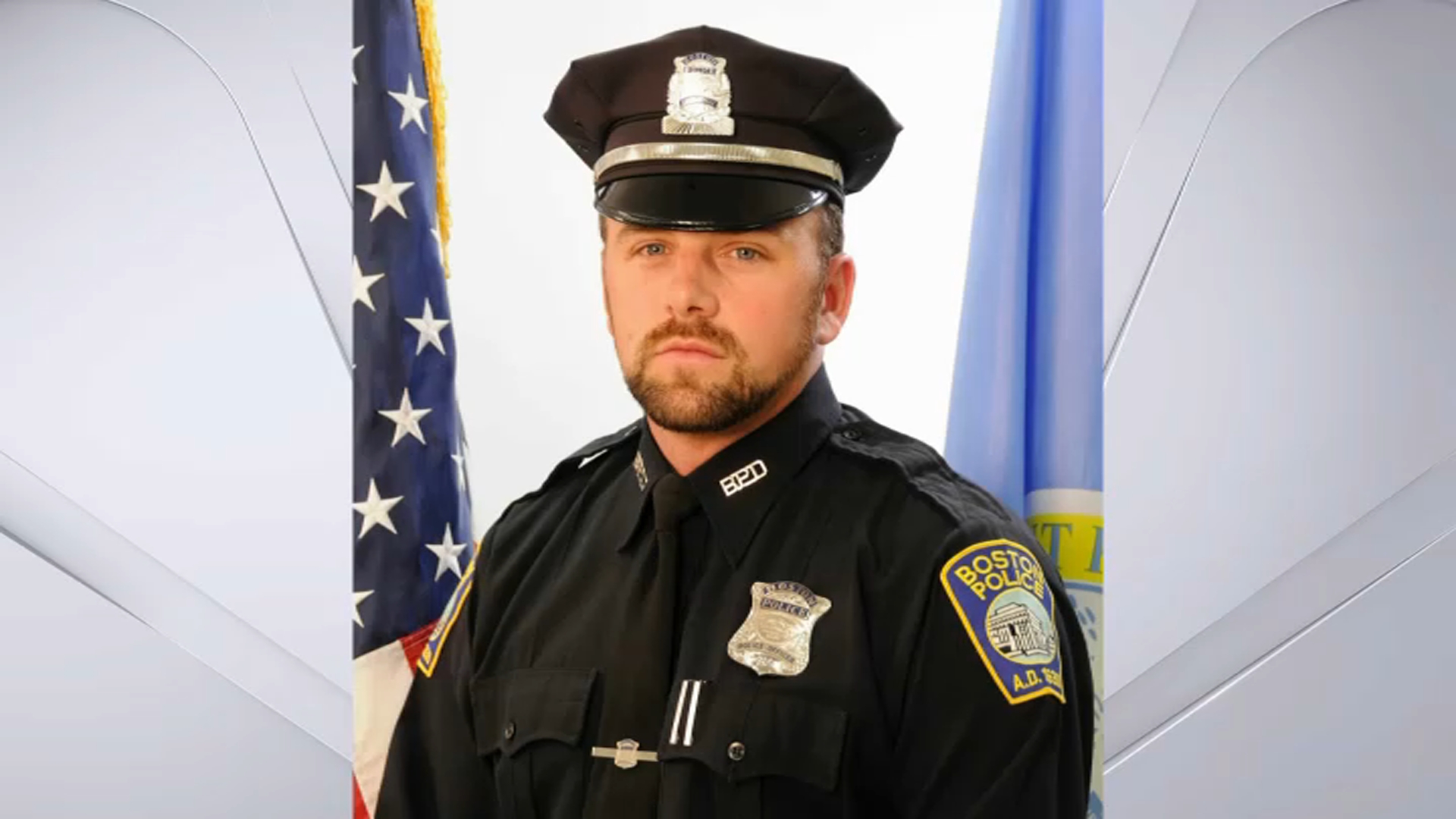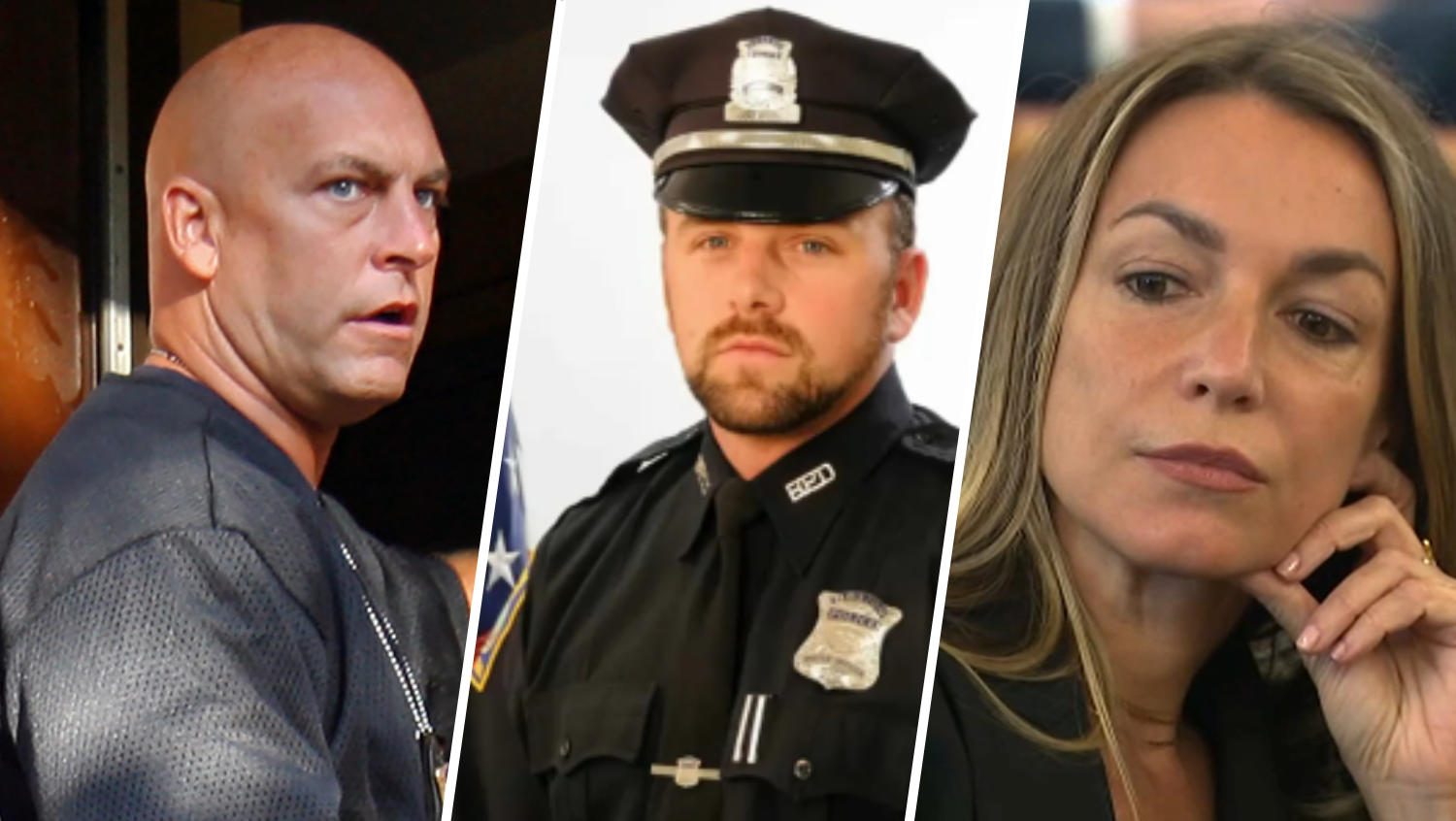The crime scene and Canton police were the focus of testimony in the Karen Read murder trial on Tuesday, with three officers taking the stand.
Sgt. Sean Goode completed his testimony before Lt. Michael Lank and Lt. Charles Ray were brought into Norfolk Superior Court.
The defense hammered away at the relationship between the parties involved in the investigation and the family that owned the home outside of which the body of Boston Police Officer John O'Keefe was found Jan. 29, 2022.
Watch the Karen Read trial live on nbcboston.com, NECN, NBC Boston streaming platforms (including Roku, Peacock and Samsung TV) and NBC10 Boston's YouTube page. Every night of the trial at 7 p.m., come back for analysis and more.
Get New England news, weather forecasts and entertainment stories to your inbox. Sign up for NECN newsletters.
Read is charged with second-degree murder in the 2022 death of O'Keefe, her boyfriend. He was found in the snow outside fellow Boston Police Officer Brian Albert's home in Canton. Prosecutors say Read hit O'Keefe with her SUV, while Read says she has been framed in a wide-ranging coverup, claiming the Albert family — which includes a Canton police officer and current selectman — and the state's lead investigator, a family friend, put the blame on Read.
Read has pleaded not guilty and is free on bond.
Watch Karen Read trial Day 6 testimony (May 7, 2024)
The trial is expected to last up to eight weeks, with full days on Mondays, Wednesdays and Fridays, and half days on Tuesdays and Thursdays.
On Wednesday, Ray will return to the stand. Here's what happened Tuesday:
Sgt. Goode finishes his testimony
Goode returned to the stand Tuesday after describing his part in the investigation during proceedings on Monday. He was asked about the station's key swipe system, through which Goode and other officers' entrance and exits to parts of the police station are logged.
He showed two versions of a report on the case from different dates, where the major difference was the photo had changed — the one from a later date showed a broken taillight, though Goode didn't see that at the scene himself.
He subsequently explained that the document shown was "not the actual meat of the report," and that it might change based on supplemental reports filed by investigators.
Before the next witness arrived, Judge Beverly Cannone said she was frustrated about how slowly the trial was moving at times, and admonished both the defense and the prosecution amid issues with the format of evidence Read's team moved to submit, saying, "We're taking an awful lot of these jurors' time. We're taking days and weeks. Let's not squander it by repetitive evidence … let's move this case along."
Lt. Lank testifies
Before Lank took the stand, Cannone allowed lawyers to discuss parts of a two-decade-old event involving Lank and another Albert brother, something the lawyers had pressed Lank on Monday without the jury present.
In a process called voir dire, the lawyers went over a 2002 altercation involving Lank, Chris Albert and a pair of brothers that led to punches thrown and criminal and civil proceedings. Defense attorney Alan Jackson had said it established a relationship Lank and the Albert family, allowed it to be discussed, with some limitations. The case would come up several times during his testimony.
Lank began his testimony by going through what he saw the morning O'Keefe's body was found, after Goode called him about 6:08 a.m. to say that a man was found in the snow in grave condition, mentioning that the apparent victim was a police officer.
On Fairview Road, Lank spoke to Goode and Jennifer McCabe — Brian Albert's sister-in-law and part of the group that was out drinking the night before, along with Read and O'Keefe — then contacted county-level investigators to let them know O'Keefe was in grave condition, something he said would be done for "any sort of scene where it appears that the person is not going to survive."
State police investigate all deaths in Canton, which is typical for smaller Massachusetts cities and towns, though Michael Proctor, the state trooper who would eventually lead the investigation, told Lank his office would not be responding, the Canton office recalled.
Lank said he was at the scene with O'Keefe for about five minutes before the stricken officer was taken to the hospital.
When he spoke with McCabe, Lank said, "I advised her that we were going to need to the homeowners," and she replied they were probably sleeping. By the time he finished calling the state investigators, he and Goode noticed a light on in the house, so they decided to speak to the homeowners, Brian and Nicole Albert, inside.
Everything inside appeared in order, he said. Brian Albert, whom he knows and has a "civil" relationship with, appeared disheveled, like he'd just woken up, Lank recalled.
Back outside the house, the officers discussed how to process the scene, deciding to use a leaf blower to clear layers of snow, revealing drops of blood and a broken cocktail glass — which prosecutors later had him show the jurors in court. Lank said he took the evidence back to the station, where he stored them in temporary evidence before it was turned over to state police.

Jennifer McCabe called Lank while he was at the station, so he went back to the house for another 5-10 minute conversation and returned.
Prosecutor Adam Lally's questions jumped ahead to the morning of Feb. 4, when Gallagher had him return to the scene for the first time since the Jan. 29 because then-Chief Kenneth Berkowitz had possibly discovered more evidence. Temperatures had warmed up and it had rained, melting snow, and Berkowitz said he found broken glass "in the vicinity of where Mr. O'Keefe had been discovered," Lank said.
State police came out and secured the shards of taillight, pictures of which were shown in court Tuesday.

Next came cross-examination, and Jackson focused on Lank's relationship with the Albert family, which dates back to when Lank, who moved to Canton when he was young, became friends with Chris Albert in junior high school.
Jackson walked Lank through the 2002 fight, but Lank disputed that it was a similar situation to the morning O'Keefe's body was found outside Brian Albert's house.
"What we just talked about, is that an example of you using your position as a police officer to come to the aid of one of the members of the albert family?" Jackson asked.
"It was me coming to the aid of someone who was terrified and scared for their family on that night…who happened to be Chris Albert," Lank said.
Of the Karen Read case, Lank agreed that "there was a perceived bias" around Canton police investigating what happened given that another Albert brother, Kevin, worked in the department.
Lank wasn't sure when he recognized the scene was at Brian Albert's house, but knew by the time it he turned on Fairview.
On him asking McCabe to wake up her sister, Jackson pressed Lank on how he treated McCabe and others at the scene, including inside the house, all of whom could be witnesses to what happened leading to O'Keefe's death.
"You didn't think it was more important to separate the witnesses?" Jackson said, to which Lank replied, "No."
Jackson played dashcam video from the scene and brought up a phone call he made to dispatch, in which he said it appeared O'Keefe "had been in a fight or whatever."
Was it possible that O'Keefe had been in a fight? "Possibly," Lank said, adding, "there were a multitude of things that were going through my head as possibilities."
Jackson moved on to discussing investigative techniques.
"Have you ever been lied to by a witness?" he asked, receiving a "Yes." Lank also said that going inside a house and interviewing witnesses is normal practice, and an obvious place to interview witnesses would be to look inside the home nearby.
Lank noted he never went beyond the home's foyer, didn't photograph or diagram the inside of the home or search the electronic devices of the people inside. He said that McCabe was present when he interviewed the Alberts and vice versa.
Jackson turned to evidence preservation, asking if the scene was "completely open" after the police cruisers protecting it left around 8 a.m. It was, Lank said, who agreed to follow-up questions that it's important to prevent evidence from being tampered with.
"There was no longer an area to preserve," Lank said.
Asked about the six red Solo Cups that the lawyers established in previous testimony held bloody snow from the scene, Lank said he was not aware that the Massachusetts State Police crime lab warns against gathering evidence in plastic.
Jackson put up images of what Lank took to be a brown paper evidence bag before realizing it was a Stop N Shop bag at Canton police headquarters. Lank didn't know if he secured the bag he'd placed in evidence with evidence tape, which wasn't visible on the top of the bag holding what appeared to be the Solo cups.
Jackson noted that the evidence tape that's applied to bags in evidence seal the bags, and require officers who open the tape to cut it and write their initials.
"Have you ever used evidence tape before, to seal anything?" Jackson asked.
"I'm sure I have, I don't recall," Lank replied.
It was Jackson's last line of questioning. Lally returned for some follow-up questions, allowing Lank to walk the jury through the 2002 incident in detail and asking what relevance that incident had on his response to the O'Keefe crime scene 20 years later.
"Absolutely nothing," Lank said.
After Lank, Lally called Canton Police Lt. Charles Ray to the stand, and they spent about 10 minutes discussing his recollection of Jan. 29 before Cannone sent the jury home for the day.




